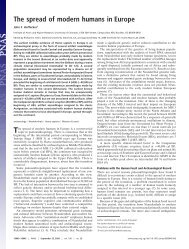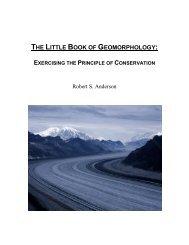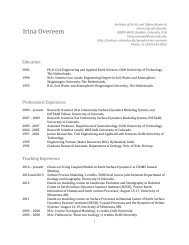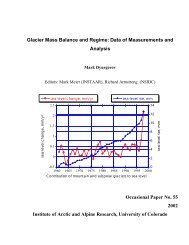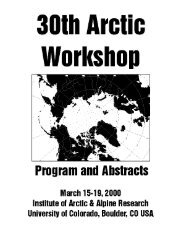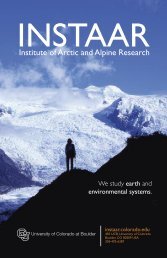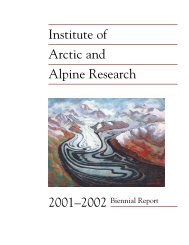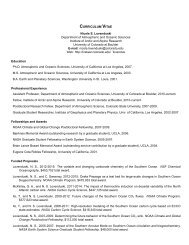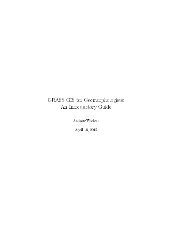Economic Feasibility Study of Colorado Anaerobic Digester Projects ...
Economic Feasibility Study of Colorado Anaerobic Digester Projects ...
Economic Feasibility Study of Colorado Anaerobic Digester Projects ...
You also want an ePaper? Increase the reach of your titles
YUMPU automatically turns print PDFs into web optimized ePapers that Google loves.
• Compilation <strong>of</strong> cost and revenue <strong>of</strong> project-specific data for regional AD projects.<br />
2.3 Data Collection Techniques. Interviews with technology providers and agricultural<br />
operators were conducted in order to determine the scope <strong>of</strong> the project and the variables<br />
to be included in the economic analysis. Primary financial data used in the enterprise<br />
budget and sensitivity analysis were obtained from agricultural project managers and<br />
technology providers <strong>of</strong> <strong>Colorado</strong> and Wyoming AD projects. Non-financial data, including<br />
information on regional policies, were obtained through interviews with technology<br />
providers, state and federal agency pr<strong>of</strong>essional, agricultural operations managers, subject<br />
matter experts, and legal database reviews.<br />
Secondary data were used to augment the primary data, and to develop a more complete<br />
picture <strong>of</strong> AD practices in <strong>Colorado</strong> and the Intermountain West. Sources <strong>of</strong> secondary data<br />
included public websites like the United States Environmental Protection Agency Ag Star<br />
Program (U.S. EPA AgStar), and regional technical reports, such as the Stewart<br />
Environmental October 2008 dairy industry feasibility study prepared for the <strong>Colorado</strong><br />
Department <strong>of</strong> Agriculture. Data from these and other reports are appropriately<br />
acknowledged and a complete list <strong>of</strong> sources is provided in the reference section. While a<br />
technical feasibility study was not the primary objective <strong>of</strong> this economic analysis and<br />
feasibility study, technical data from these and other reports are presented to support<br />
findings from the project.<br />
There are some important limitations to this study, which should be noted. First, the study’s<br />
short time horizon prevented further exploration <strong>of</strong> a few important topics and the inclusion<br />
<strong>of</strong> a few important data sources. For example, technology providers and operational<br />
managers both expressed a desire to have a better understanding <strong>of</strong> available financial<br />
instruments for carbon <strong>of</strong>fsets. Although the Governor’s Energy Office <strong>Colorado</strong> Carbon<br />
Fund does an excellent job <strong>of</strong> making information available to the public (and Ms. Susan<br />
Innis was particularly helpful in the preparation <strong>of</strong> this report), the public craves more<br />
information about this subject than could be summarized in this report. Second, it is also<br />
worth noting that future projects should include interviews with utilities companies to feature<br />
their perspectives on current and upcoming energy programs and potential policies that<br />
have the potential to expand alternative energy practices. Third, the budgeting and<br />
sensitivity analysis models are simply based upon data available. As more data emerge,<br />
these models can be refined and will become more exact.<br />
<strong>Economic</strong> <strong>Feasibility</strong> <strong>Study</strong> <strong>of</strong> <strong>Colorado</strong> <strong>Anaerobic</strong> <strong>Digester</strong> <strong>Projects</strong><br />
Prepared by Dr. Catherine Keske, <strong>Colorado</strong> State University<br />
August 2009<br />
Page 8 <strong>of</strong> 79



